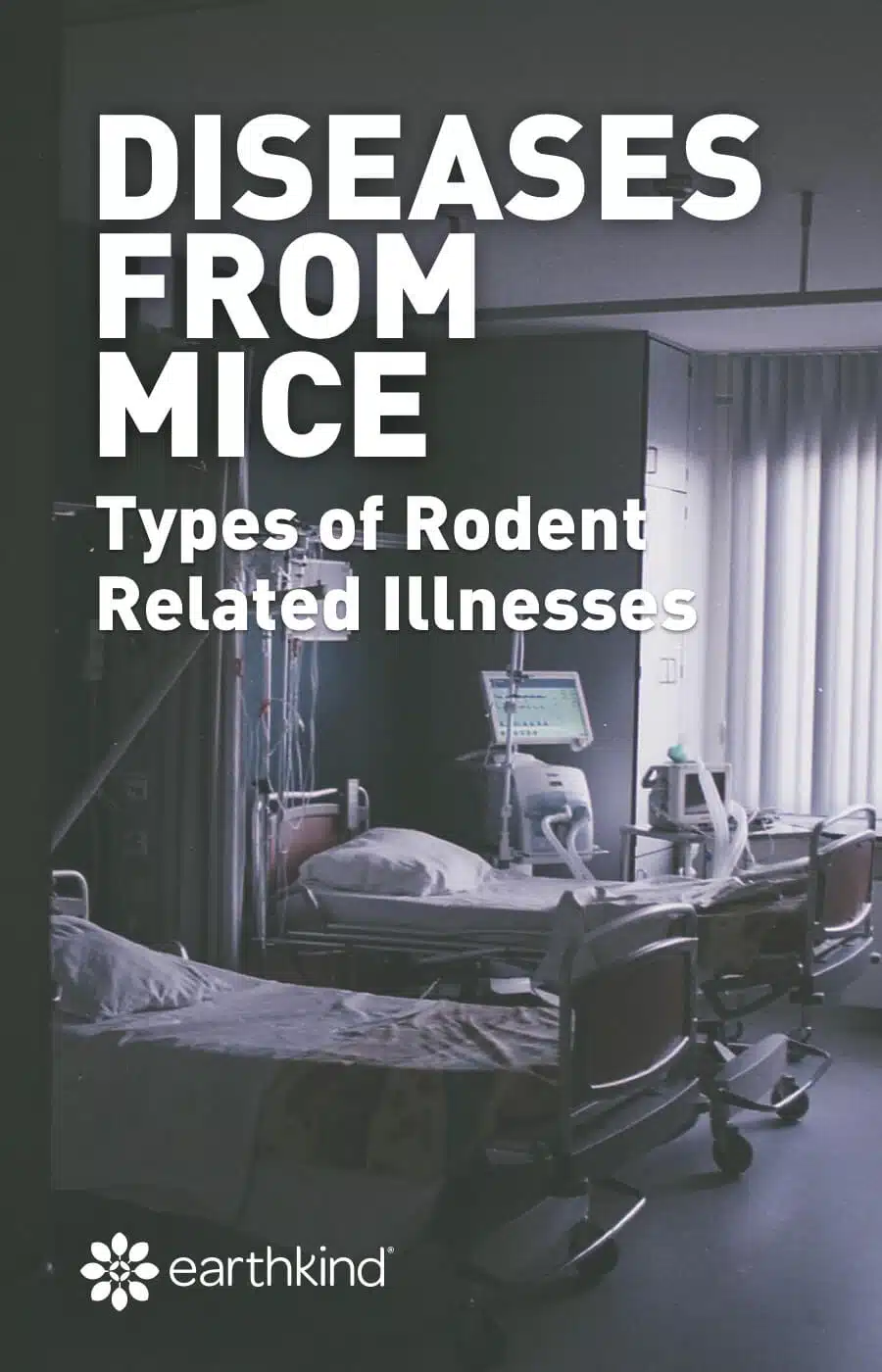All About Diseases From Mice & Other Rodents
By: EarthKind
A mouse in the house can be more than just a nuisance; a rodent infestation can be a serious threat to the health of yourself, your family, and your pets. Rats in New York City have been called “disease-sponges,” and wild mice are known for spreading the potentially fatal Hantavirus, resulting in outbreaks like the one at Yosemite a few years ago.
They urinate and defecate wherever they see fit instead of only going in designated places. They don’t cover their mouths when they cough or sneeze and they can spread all kinds of germs.
It’s important for homeowners to understand the different mouse diseases that exist so you can keep your family safe. This article contains information on some of the possible diseases and health risks to look out for around your home.
What Diseases Do Mice Carry?
Despite their small size, rodents can cause a lot of trouble. For years, we have known that rodents carry at least 35 different infectious diseases that can be transmitted to humans through direct or indirect contact. Even if you think they look kind of cute, the damage they cause can have serious consequences.
Beyond property damage, there are also health concerns to keep in mind if you have or suspect a mouse problem in your home. Here are some of the most common diseases they carry:
- Hantavirus
- Lyme Disease
- Colorado Tick Fever
- Babesiosis
- Salmonella
- Rat-Bite Fever
Don’t dismiss these small creatures as harmless. Taking the proper measures to help control a pest problem and prevent it from happening again in the future will also help keep your family protected from possible health risks.
Here’s more information on the most common and most concerning illnesses transmitted by mice that you should be aware of and the symptoms to look for.
Hantavirus Pulmonary Syndrome (HPS)
- A severe, sometimes fatal, respiratory disease transmitted when people breathe air contaminated by the virus. The virus can shed through rodent droppings, urine, or saliva, and that’s when contamination can occur.
- Symptoms include fatigue, fever, muscle aches, coughing, and shortness of breath.
- There is no vaccine or cure; treatment consists of managing symptoms.
Keep your home pest free with simple, effective solutions. Subscribe and save!
Lyme Disease
- Lyme disease is caused by the bacterium Borrelia burgdorferi and is transmitted to humans through the bite of infected black-legged ticks which can be carried by rodents.
- Symptoms include fever, rash, facial paralysis, and arthritis.
- Most patients recover when treated with a few weeks of oral antibiotics, although some experience Chronic Lyme Disease or Post-treatment Lyme Disease Syndrome.
Colorado Tick Fever
- A virus is spread to people through bites of infected ticks which can be carried by mice.
- Symptoms include fever, chills, headache, body aches, and feeling tired. Some patients have sore throat, vomiting, abdominal pain, or skin rash.
- There are no medications to treat Colorado Tick Fever; treatment consists of managing symptoms.
Babesiosis
- Babesiosis is caused by microscopic parasites that infect red blood cells and are spread by certain ticks that can be carried by rodents.
- Some people develop flu-like symptoms, such as fever, chills, sweats, headache, body aches, loss of appetite, nausea, or fatigue, but others show no symptoms. For the elderly or people with weakened immune systems, babesiosis can be severe and life-threatening.
- People who do not have symptoms or signs of babesiosis usually don’t need treatment, but options are available. Please consult a medical professional.
Salmonella
- Salmonella is a bacteria that makes people sick. It can be spread by eating or drinking foods that have been contaminated by rat feces.
- Symptoms include diarrhea, fever, and abdominal cramps.
- Most cases of salmonella will resolve themselves in a few days, but sometimes hospitalization is required to manage symptoms.
Rat-Bite Fever
- Rat-bite fever is a disease that occurs in humans who have been bitten by an infected rat or, in some cases, squirrels, mice, cats, and weasels.
- Symptoms include fever, chills, headaches, skin rash, vomiting, and other complications.
- When treated promptly, antibiotics are usually effective.
If you suspect a mouse problem in your home and notice any of these symptoms from your family members, schedule a check-up to get it figured out as soon as possible.
How to Clean Up & Further Prevent
Avoiding contact with rats and mice is the best way to protect your family from the above diseases. If you do have a mouse in the house, use extra caution when cleaning up after it has been removed. Click here for more information about safely cleaning up mouse droppings to avoid any type of mouse-related illness, and learn more here from the CDC on cleaning their waste properly. Always avoid direct contact with their waste and nesting materials. In addition to spreading disease, rats and mice can cause major property damage and issues with contaminated food.
Take time to prevent pest problems in your home by sealing potential entry points such as cracks in your home’s foundation, gaps near doors, and damaged window screens. Maintain cleanliness to reduce available food and water sources for rodents. For example, store dry foods in airtight containers and use a covered trash can.
To further help control the issue, consider using our botanical repellent, Stay Away® Rodent, to keep these pests out of your home using powerful, plant-based ingredients.









 day
day